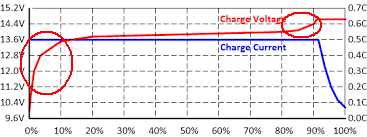I just completed cycle 1,936 on my oldest 18650 14s battery and no sign of degradation - which is nearly 6 years of operation. Lifetime average of 35.1% DOD. LifePo4 chemistries are reported to have more cycles at 80% DOD than 18650 INR chemistries.
What's important in my mind is a *low stress* operation (not communications necessarily). A properly sized battery bank for mild charge/discharge C levels, mild DOD, and mild ambient temps/humidity should lead to the best life span. Based on my experience so far, I'm inclined to believe 7,000 cycles for LifePo4 is possible.
But of course it takes a long time (on the order of 21yrs) for actual proof of 7,000 cycles at 335 cycles/year. May enough of us be on this forum long enough to prove or disprove the lifespan numbers




